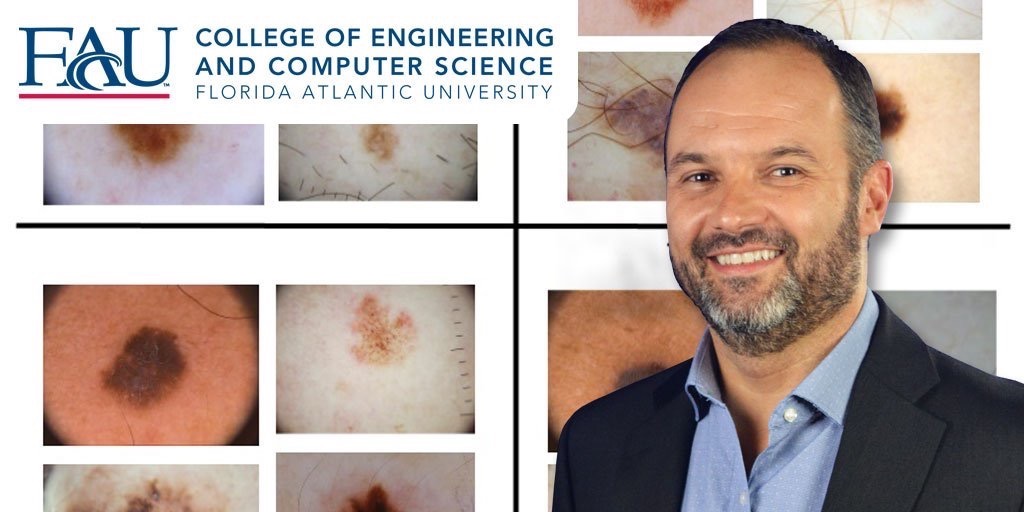For the past 5 years I have been working on the intersection of AI and Dermatology, particularly skin lesion segmentation and classification and early melanoma detection. This research has been sponsored by the NSF Industry/University Cooperative Research Center for Advanced Knowledge Enablement (CAKE), the Farris Foundation, and other sources. The research team has included FAU graduate and undergraduate students, as well as colleagues and students from India and Spain.
Research results have appeared in the Master’s theses of Jack Burdick (“Skin lesion segmentation and classification using deep learning”, Florida Atlantic University, 2018) and Esad Akar, a Bachelor’s Thesis of Adrià Romero López (winner of the Best Bachelor Thesis Award in the field of telecommunications engineering 2016-2017) at Universitat Politècnica de Catalunya (UPC), as well as the scientific conference abstracts and presentations and journal papers listed at the end of this post.
Results of our work have generated news stories and press coverage and have been prominently announced through a flyer prepared and distributed by FAU’s College of Engineering and Computer Science Dean’s Office. During the past few years I have also advised startup companies in this space.
This is a very active area of research, with great practical potential, especially in the context of telemedicine and teledermatology.
If you’re interested in learning more about it or would like to consult with me for projects and publications, don’t hesitate to contact me via social media or by email: oge [dot] marques [ät] gmail.com
- A. Romero Lopez, X. Giro-i-Nieto, J. Burdick, and O. Marques, “Skin lesion classification from dermoscopic images using deep learning techniques”, IASTED International Conference on Biomedical Engineering, Innsbruck, Austria, February 2017. DOI: 10.2316/P.2017.852-053
- J. Burdick, O. Marques, A. Romero Lopez, X. Giro-i-Nieto, and J. Weinthal, “The impact of segmentation on the accuracy and sensitivity of a melanoma classifier based on skin lesion images,” SIIM Annual Meeting, Pittsburgh, PA, June 2017. [slides]
- J. Burdick, O. Marques, J. Weinthal, and B. Furht, “Rethinking Skin Lesion Segmentation in a Convolutional Classifier”, Journal of Digital Imaging (2017) https://doi.org/10.1007/s10278-017-0026-y
- E. Akar, O. Marques, W.A. Andrews, and B. Furht, “Cloud-based Skin Lesion Diagnosis System Using Convolutional Neural Networks”, Computing Conference 2019, London, United Kingdom, 16-17 July 2019.
- O. Marques and L. Zaniolo, “Evaluation of the Use of Convolutional Neural Networks with Variable Stride for Skin Lesion Classification”, European Society of Medical Imaging Informatics (EuSoMII) Annual Meeting, Valencia, Spain, October 2019.
